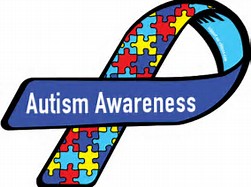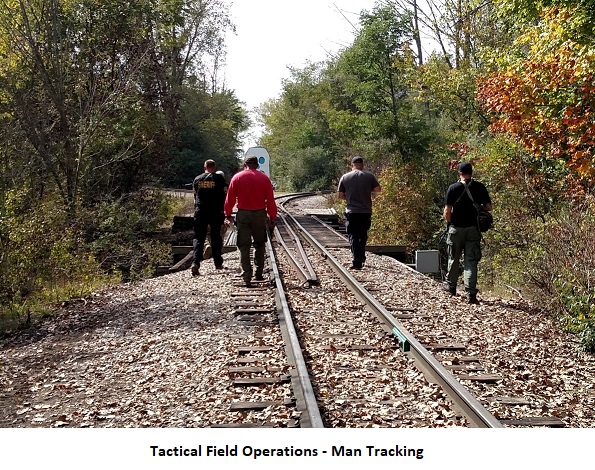People have been using edged weapons since the beginning of time. They are still around in one form or another. Ever since the terrible events of 9/11, where the hijackers used box cutters, there has been an increased awareness of edged weapons. As recently as 2017, a high-profile terrorist attack occurred at Flint Bishop Airport. The suspect used a 12” knife to severely injure a police officer.
This program addresses the psychological stress of an edged weapon confrontation and how to defend against it using the OODA Loop principle. Students will participate in scenario-based practical exercises. Most people have no idea how to defend against an attack with a sharp object. Most what you see on TV is just enough to get people hurt.
This training addresses two sides of the edged weapons story. First it deals with defending against an attack. The second part explains how to use an edged weapon, if necessary.
Instructor: Lee Shaykhet – is a provider of specialized methods of self-defense. Lee has experience training the former Soviet Army and has provided instruction for law enforcement and military organizations in Michigan, Indiana, Illinois, Kentucky, Wisconsin, Ohio, Florida and Minnesota, and in Canada. He has trained security and consulting companies, and bodyguards for several high-profile events.
Strategies and Tactics for New Supervisors
Failure to train new supervisors to properly lead, manage, and run the day-to-day operations of the agency is one of the most common problems in public safety today. Leaders must be built within an organization and understanding the basics of leadership and management will be critical to help the new supervisor transition into their position. Developing good supervisors is one of the keys to developing a good agency. This course will provide newly promoted first line supervisors the knowledge and skills necessary to transition into their new position.
This 20-hour course will:
o Define the foundations of leadership and describe their departmental and personal vision.
o Understand the importance of developing and strong ethical foundation of all employees.
o Define fundamental leadership styles and understand their own personal style.
o Define the difference between performance issues, policy issues, and serious misconduct as well as the supervisor’s role in handling such incidents.
o List the day-to-day duties of a public safety-first line supervisor and how to prioritize issues.
This class is recommended for supervisors, newly promoted supervisors, or employees preparing for a future role as a supervisor.
Instructor – Steve Kellams
Steven Kellams retired in 2019 as the Administrative Captain for the Bloomington Police Department in Bloomington Indiana. Captain Kellams attended Indiana University from 1987 to 1991. In 1989, he graduated from the Indiana University Police Academy. In 1991, he was hired by the Bloomington Police Department and was assigned to night shift. After spending 10 years as a night shift patrol officer, Captain Kellams was promoted to Sergeant, and then Lieutenant. His final position with the department was as the Administrative Captain, responsible for several duties including internal affairs, public information, and CALEA Accreditation.
Course Description: This training session will focus on defining autism, recognizing autism in the field, and strategies for interacting and engaging with people with autism. The three most common, high-risk calls involving people with autism will be presented and discussed as well as criminal justice contact trends and interview techniques. Information specific to fire, EMS, and emergency room personnel is included. The training session is presented through multimedia images, audiovisual video, lectures, and handouts. Case examples will be discussed.
Instructors: Drs. Christine Kenney and Melissa Sreckovic are associate professors at the University of Michigan-Flint in the Education Department. Dr. Sreckovic earned her Ph.D. from the University of North Carolina at Chapel Hill in Special Education with a focus on autism spectrum disorders and her MA from Michigan State University in Special Education and Literacy. Dr. Kenney earned her Ph.D. from the University of Michigan in Language, Literacy, and Culture and her MA from Eastern Michigan University in Early Childhood Education with a focus on Special Education. Drs. Sreckovic and Kenney have worked with individuals with autism for more than 15 years, including young children, adolescents, and adults. Most of their work with individuals with autism has been in school settings, but they have also supported individuals with autism in clinical and residential settings. They combine their expertise and passion for autism with their knowledge and experience in adult learning strategies.
Tactical Field Operations – Man Tracking
Firearms Identification Training
Are you comfortable with your knowledge and skills to safely handle and unload multiple types of firearms including pistols, revolvers, rifles, and shotguns? Are you familiar with different types of firearms and how to identify and classify them correctly? Are you able to identify common machine guns, machinegun conversion devices, silencers, short-barreled rifles, and short-barreled shotguns? If not, then this training is important for you! The class will instruct you on how to:
– Identify firearm parts and use correct terminology.
– Demonstrate safety procedures when handling and unloading firearms.
– Identify Federal firearm laws, Michigan firearm laws, Federal & Michigan firearm definitions.
– Identify markings on U.S. manufactured and imported firearms.
– Identify characteristics of a Homemade Firearm (aka “Ghost Guns”).
– Given a selection of firearms, be able to identify the manufacturer, and/or importer, model, caliber, and serial #.
– Identify markings on ammunition and identify the caliber or gauge.
– Recognize machine guns, machinegun conversion devices (e.g. “Glock Switch”), silencers, short-barreled rifles, and short-barreled shotguns.
– Identify National Firearms Act registration (transfer) tax forms.
– Measure the barrel length and overall length of a rifle and shotgun and identify open-bolt and closed-bolt firearms.
– Demonstrate a field function check for automatic fire.
-This hands-on training will increase your overall knowledge involving many types and styles of firearms. You will be taught how to safely handle, unload, and correctly identify over 50 various types of firearms available at the training.
Instructor: Brian Luettke of Luettke Firearms Consulting, Inc. served 29 years in law enforcement which included four years as a police officer in Novi, Michigan and 25 years in Federal law enforcement prior to his retirement in October 2020. In his last 22 years in law enforcement, he served as a Special Agent with the Bureau of Alcohol, Firearms, and Explosives (ATF). When Brian retired from ATF, he was a Supervisory Special Agent and the Chief of the Advanced Firearms and Interstate Nexus (Training) Branch located within the Firearms and Ammunition Technology Division (FATD) in Martinsburg, West Virginia. During this position, Brian was the training branch supervisor and instructor for an advanced level firearms identification training course. He has taught firearms and ammunition identification at various locations in the United States and to law enforcement officers in Canada, Europe, and Africa. Brian has received training and toured over 40 firearm factories and 12 ammunition manufacturing facilities throughout the United States, and in Canada, South Africa, Germany, Czech Republic, Hungary, and Austria.
STREET GANG INVESTIGATIONS
Provided by: Northeast Counterdrug Training Center Co-hosted by: U.S. Attorney’s Office – Eastern District of Michigan; MAGLOCLEN, and LEORTC
This course explores the current trends, identifiers, and dynamics of street gang investigations. Understanding and identifying gang culture both on the street and in correctional facilities requires investigators from both local law enforcement and corrections to work together and share information.
The intent of this course is to prepare officers in both large and small agencies to properly identify and interdict gang activity in their respective jurisdictions, collect and manage their gang intelligence, and communicate this information with neighboring jurisdictions and correctional facilities. Many states have their own gang enhancement statue, but it is often not utilized to prosecute at the state level. The instructors of this course will demonstrate how to take the evidence and stored gang intelligence in a gang case and apply it in the courtroom. Not all street gangs establish themselves with a nationally recognized gang name.
The instructors will provide reasonable explanations why their local hybrid street gangs are just as violent, and dangerous as nationally recognized gangs are in larger cities.
This class will explain the command structure, membership requirements, and adopted signs and symbols, hybrid gangs will create. Additional gang evidence will also be covered such as step-by-step examples of how to testify as a gang expert, drug trafficking expert, armed subject expert, and cellphone records expert in court, to assist student’s state’s attorney’s office in prosecuting your local gang members. This course will also explain why your gang investigation unit plays an important role in community trust and show examples of how to build those relationships between police and community.
CRITICAL INCIDENTS AND THE MEDIA
This unique training opportunity is applicable for law enforcement Public Information Officers, Supervisors, Administrators, Chiefs, Sheriffs, or anyone assigned to work with the media. Topics include:
- What the media expects from a good PIO
- What the media expects from leadership
- How to be a more effective communicator for internal and external audiences
- How the media works
- Effective and ineffective ways to handle message/response
- What makes a story “Newsworthy”?
- Why reporters ask the questions they do
- Why is it important to provide certain documents before being asked
- The timing of the news cycle and the lifespan of a story
- How a one-day story can become a week-long negative publicity escapade
- How to avoid long-lasting negative coverage
- How to talk to reporters, on the phone, live, on camera, or in a recorded interview
- Effective public speaking
- Dissection of a real-life scenario, what went wrong and right, lessons learned
Instructors:
Anastasiya Bolton is an award-winning broadcast journalist, media expert and crisis communications professional. During her 22 years in TV, including 12 years in Denver, she specialized in reporting on high-profile, difficult, emotional events, including the Aurora, CO Theater shooting, the shooting at a Church in Sutherland Springs, TX and Santa Fe, TX High School shooting. She’s covered the disappearances of 10-year-old Jessica Ridgeway in CO and 18-year-old Natalee Holloway in Aruba. Anastasiya’s helped law enforcement, non-profits, gov. agencies & others plan for crisis, develop comms plans, tell their stories, prepare for media interviews, and respond to negative publicity.
Cassidee Carlson, Aurora PD Division Chief (Ret.), spent 20 years as a police officer in Aurora Colorado. She recently retired as a Division Chief. During her career, she was a Field Training officer, served on the SWAT team, worked in major crimes, the PIO unit, and Internal Affairs. In 2022, as the Operations Division Chief, she oversaw patrol, community policing and the School Resource Unit. Cassidee’s innovative PIO response to the Aurora Theater shooting has become a national model on how to handle mass casualty incidents and help victims of crime navigate media inquiries. Cassidee and her federal partners have worked tirelessly to share her knowledge and expertise across the country.







